
Hollywood, the shimmering mirage on the horizon of American dreams, has always been a place of glittering illusion and captivating spectacle. Yet, beneath the veneer of red carpets and silver screens, Tinseltown has harbored a shadowy underbelly, a collection of scandals so profound, so utterly human in their complexity, that they offer a stark reminder of the fragile line between public adoration and private devastation.
While today’s celebrity missteps ignite a social media firestorm that burns brightly for a day or two before fading into the digital ether, the scandals of yesteryear often simmered with a potent blend of intrigue, moral outrage, and tragic consequences. These were not mere tabloid fodder but seismic events that reshaped careers, exposed societal prejudices, and, in some cases, even ended lives. They reveal a landscape where power was absolute, secrets were currency, and the pursuit of fame often came at an unbearable cost.
Join us on an investigative journey as we unearth some of the most compelling and often overlooked narratives from Hollywood’s scandalous past. From a fateful car crash involving a burgeoning star to tales of murder, betrayal, and systemic injustice, these are the stories that, though perhaps faded from collective memory, continue to whisper the darker truths of an industry built on both magic and menace. Each revelation offers a unique window into the moral fabric and societal pressures of its time, painting a picture far more nuanced than the polished images of celebrity.

1. Jennifer Grey and Matthew Broderick’s Fatal Car Crash: The Shadow Before Stardom
Just before the iconic film *Dirty Dancing* hit theaters in 1987, catapulting Jennifer Grey into global stardom, an unimaginable tragedy unfolded. Grey and her then-boyfriend, Matthew Broderick, were involved in a fatal car crash in Ireland, an event that cast a long, somber shadow over their burgeoning careers. This was not merely a celebrity mishap; it was a devastating incident that claimed two innocent lives and forever linked the stars to a profound real-world sorrow.
Broderick was behind the wheel at the time, and the collision resulted in the deaths of two women: a mother and daughter. The sheer gravity of the situation—a promising Hollywood star implicated in a fatal accident—was immense. He was subsequently convicted of careless driving, a legal outcome that, while official, could never truly reconcile the public’s fascination with the private anguish of those involved. The incident, though widely reported at the time, has largely receded into the background of Hollywood lore, overshadowed by the subsequent success of *Dirty Dancing*.
The juxtaposition of Grey’s immediate ascent to fame with the weight of this tragedy is particularly striking. While her career soared, the personal burden of the accident undoubtedly remained. It stands as a poignant reminder that even amidst the dazzling highs of Tinseltown, real-world consequences and profound loss can intrude, leaving an indelible mark that the spotlight often fails to fully illuminate or, perhaps, intentionally obscures.

2. Anna Nicole Smith and J. Howard Marshall II: A Tabloid Spectacle of Love and Loathing
In 1994, the marriage of 26-year-old model Anna Nicole Smith to 89-year-old oil baron J. Howard Marshall II became instant, irresistible tabloid fuel, a story that perfectly encapsulated Hollywood’s insatiable appetite for the sensational. The significant age gap between the glamorous model and the elderly billionaire sparked widespread speculation and judgment, turning their union into a public spectacle that questioned the very nature of love, ambition, and financial aspiration in the glare of the media.
The public nature of their vows only heightened the drama. With the groom speaking from a wheelchair, Marshall attempted to reassure a skeptical audience that his love for the model was unequivocally real. However, the whispers and doubts persisted, fueled by the stark contrast between the two individuals and the immense wealth involved. This was a narrative ripe for scrutiny, dissecting the motivations of both parties through the unforgiving lens of celebrity gossip.
Marshall’s death just a year later only intensified the circus, triggering a prolonged and bitter legal battle over his estate that would continue for years, long after Smith herself had passed. The scandal of their marriage, while not criminal, highlighted the performative aspect of celebrity relationships and the public’s fascination with narratives that conflate romance with material gain, a tale that, for many, remains a symbol of an era’s excesses.
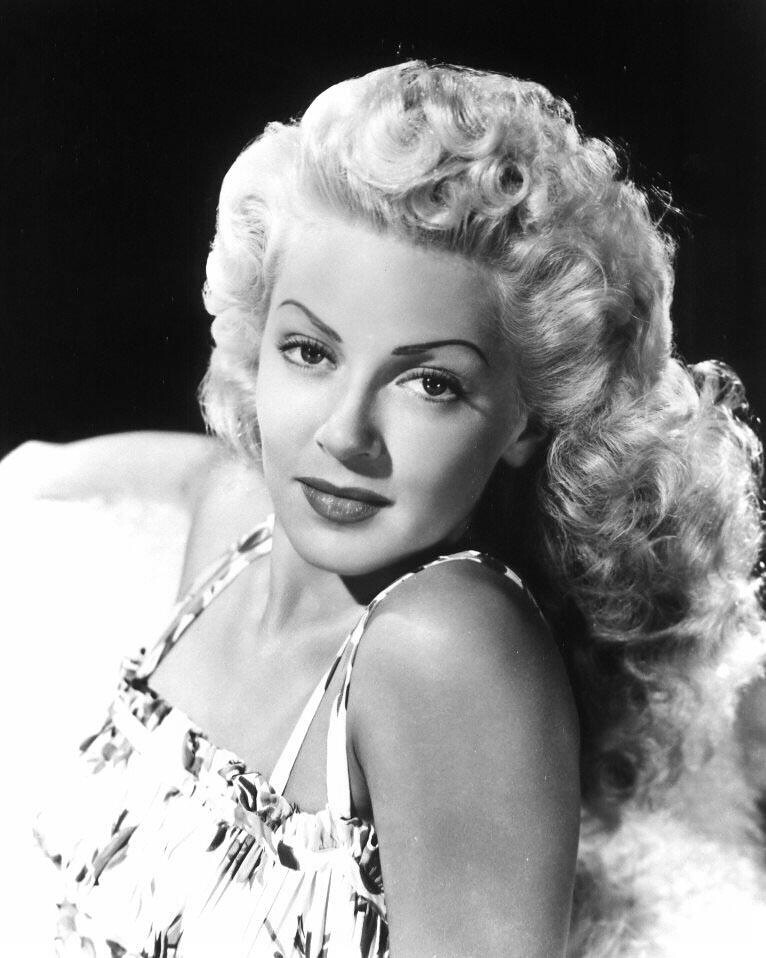
3. Lana Turner and Cheryl Crane: A Mother’s Love, a Daughter’s Desperation
In 1958, Hollywood was rocked by a brutal murder that unfolded within the confines of screen legend Lana Turner’s home. Her boyfriend, gangster Johnny Stompanato, was found dead, stabbed with a butcher knife by none other than Turner’s own daughter, Cheryl Crane. This was not just a crime but a deeply personal tragedy that ripped through the glamorous facade of a star’s life, forcing intimate details of abuse and desperation into the harsh public light.
Rumors swiftly circulated, painting a grim picture of Turner’s relationship with Stompanato, with accounts emerging of increasing violence. One actor reportedly said, “He started roughing her up, and things got increasingly ugly,” further detailing how, after she wouldn’t allow him to escort her to the Academy Awards, “he beat her savagely.” These revelations framed Crane’s act not as cold-blooded murder but as an desperate measure of protection against an abusive figure.
The subsequent investigation and public inquiry were a harrowing ordeal. Reporter James Bacon recalled hearing Turner ask, “Can I take the blame for my baby?” during her interrogation, to which Police Chief Clinton Anderson reportedly replied, “Not unless you actually committed the crime.” Turner then reportedly bowed her head and said, “Okay, Chief, it was my daughter.” Ultimately, Crane’s actions were deemed justifiable homicide, protecting her mother from a violent man, but the scandal etched itself permanently into Hollywood history, a stark reminder of the dark undercurrents that could exist even within the most celebrated lives.
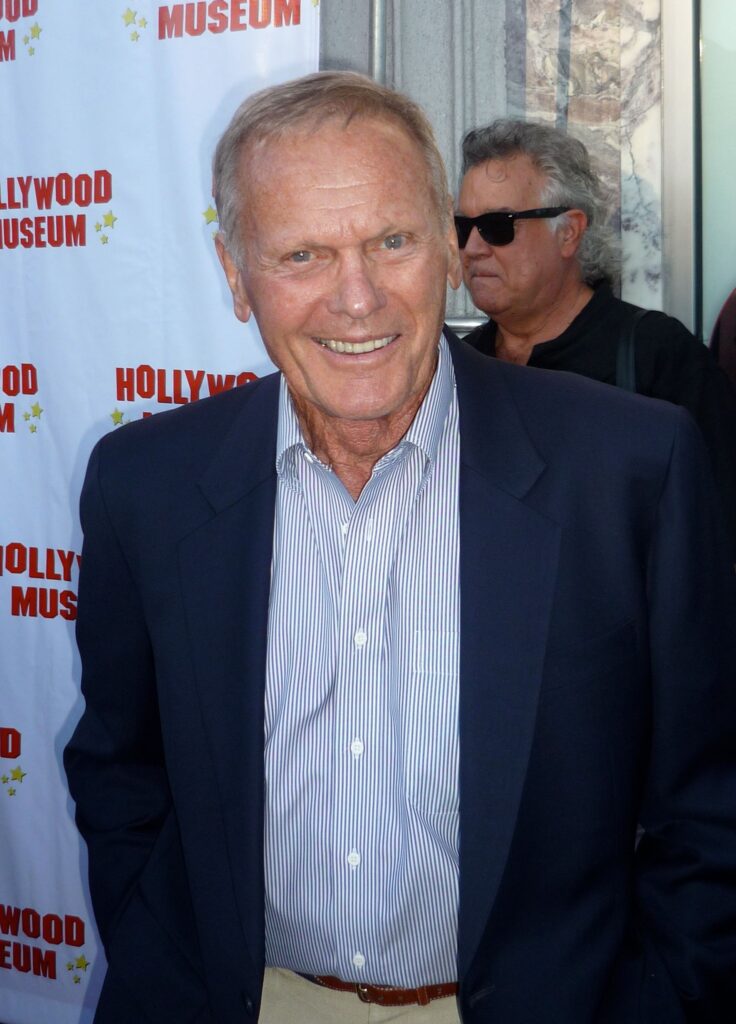
4. Tab Hunter and Rock Hudson: The Price of a Closet in Golden Age Hollywood
The 1950s heralded the era of the “matinee idol,” where handsome young men like Tab Hunter captivated audiences, embodying a pristine image of masculinity and romance. Yet, beneath Hunter’s dashing exterior lay a carefully guarded secret: he was gay. This personal truth intersected with the ruthless machinery of Hollywood when his agent, Henry Willson, made a chilling decision that would forever alter Hunter’s career and cast a stark light on the industry’s homophobic underbelly.
Willson, a real-life character immortalized in fiction, also managed the career of Rock Hudson, a far bigger and more lucrative star who also lived in the closet. In a desperate bid to protect Hudson from exposure by *Confidential Magazine*, which had obtained evidence of Hudson’s homouality, Willson offered up Hunter’s secret instead. He “made them aware of the fact that five years earlier, before I was anybody, I had been arrested for disorderly conduct when police raided a party at which I — and a number of other gay people — were in attendance,” Hunter later recounted.
*Confidential* subsequently published a story detailing Hunter’s arrest at a “limp-wristed pajama party,” a public shaming that irrevocably damaged his career. While Hudson’s star continued to rise, Hunter’s never fully recovered, becoming a tragic testament to the industry’s systemic homophobia and the transactional nature of celebrity in an era where authenticity was often sacrificed for image. It’s a poignant, almost forgotten tale of personal sacrifice and systemic injustice.

5. Roscoe ‘Fatty’ Arbuckle: The Acquittal That Couldn’t Save a Career
One of Old Hollywood’s most sensational and enduring scandals involved silent film star Roscoe “Fatty” Arbuckle. In 1921, he was arrested on suspicion of having raped and murdered aspiring actor Virginia Rappe, who tragically died of a ruptured bladder days after partying with Arbuckle. The accusations ignited a media frenzy, painting Arbuckle as a depraved monster and setting the stage for one of the most infamous trials in cinematic history.
Witnesses allegedly heard Rappe call from his hotel room, “I’m dying… he hurt me,” fueling the prosecution’s case and public outrage. Arbuckle, however, maintained his innocence, submitting a statement to the *Los Angeles Times* asserting, “After Miss Rappe had a couple of drinks she became hysterical and I called the hotel physician and the manager.” This stark contradiction between accusation and defense created a narrative of intense public fascination, with newspapers like *The San Francisco Examiner* proclaiming, “SF BOOZE PARTY KILLS YOUNG ACTRESS,” and *The Chicago Herald Examiner* dramatically stating, “ARBUCKLE FACES GALLOWS.”
Despite the media’s zealous condemnation, Arbuckle was ultimately acquitted not once, not twice, but three separate times. The jury in his third trial went further, adding, “Acquittal is not enough for Roscoe Arbuckle. We feel that a great injustice has been done him.” Yet, even this emphatic vindication could not salvage his career. The scandal, regardless of his legal innocence, had already ruined him, a cautionary tale of how public perception and sensationalist journalism can irrevocably condemn an individual, demonstrating the formidable, often destructive, power of the press.
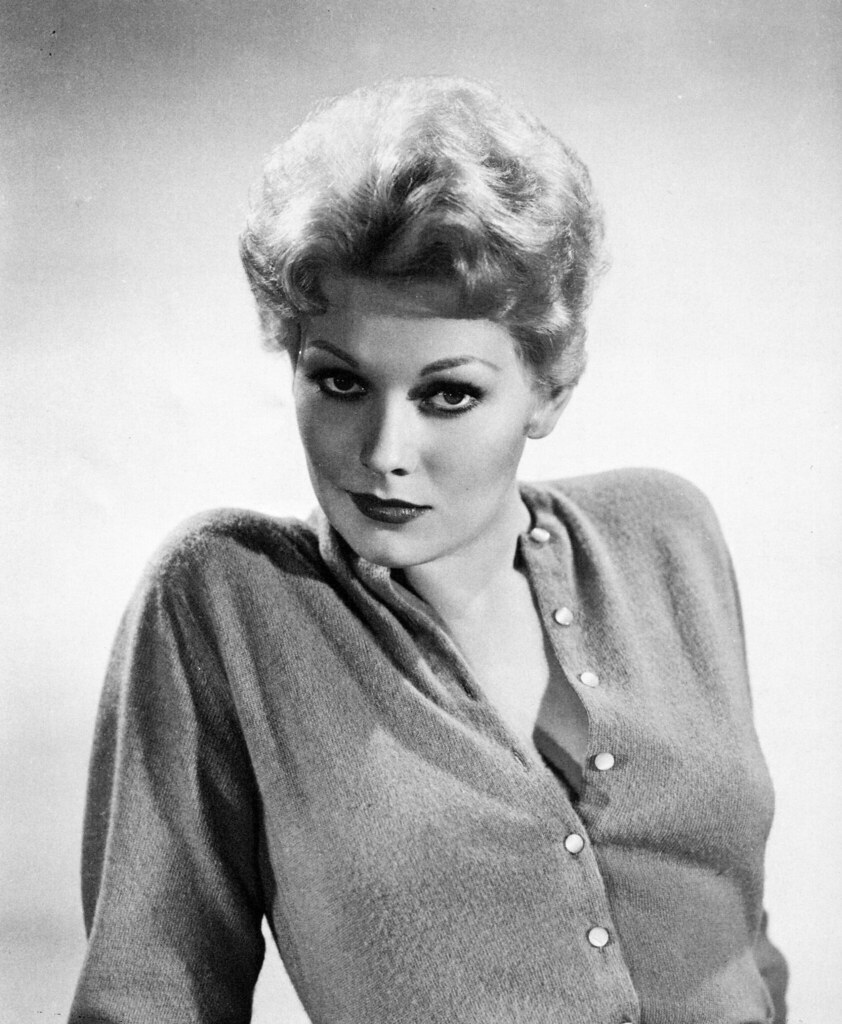
6. Sammy Davis Jr. and Kim Novak: A Forbidden Romance, a Mafia Threat
Sammy Davis Jr., a dynamic member of the legendary Rat Pack, found himself embroiled in a scandal in 1957 that laid bare the ugly truth of Hollywood’s pervasive racism. His relationship with Kim Novak, the stunning star of Alfred Hitchcock’s *Vertigo*, was an interracial romance that sent shockwaves through the rigid, racially segregated studio system. This was more than just gossip; it was an act of defiance against unspoken rules, with potentially deadly consequences.
Davis candidly expressed the manufactured nature of their initial connection, writing in his autobiography, “*Sammy*”, “She hadn’t thought about me any more than I had thought about her — until it was forbidden.” Once the studio boss, Harry Cohn, discovered their affair, he swiftly moved to quash it. Cohn, notorious for his iron-fisted control, deployed the most fearsome enforcers of the era: the Mafia. The message delivered to Davis was chilling and unequivocal.
As his friend Arthur Silber later recalled, “They said they would break both of his legs, put out his other eye, and bury him in a hole if he didn’t marry a Black woman right away.” The threat was effective and terrifying. Within weeks, Davis married Loray White, sacrificing his personal desires for his physical safety and career. His rueful question to Silber, “Why won’t they let me live my life?” reverberates with the pain of an artist whose talent transcended color lines, but whose life was brutally constrained by the bigotry of his time.
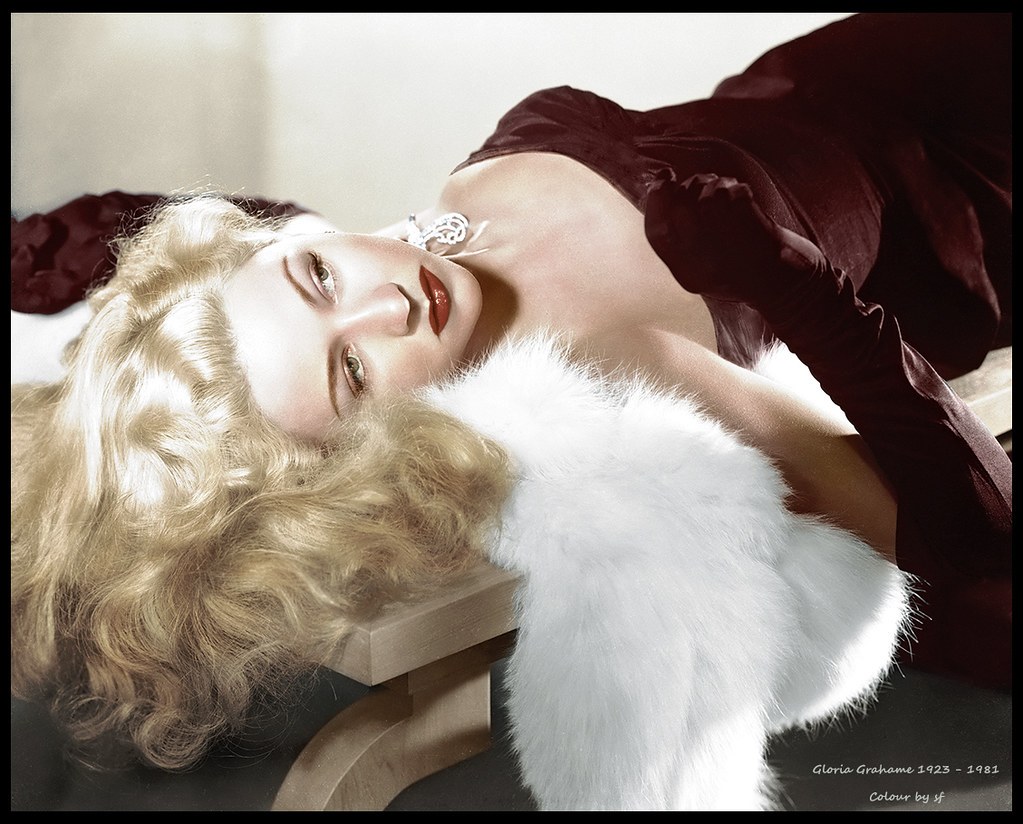
7. Gloria Grahame and Tony Ray: A ‘Cradle-Robbing’ Affair That Shocked Society
Gloria Grahame, an actress of considerable talent and a troubled personal life, was at the center of a scandal that defied societal norms and left an enduring mark on her reputation. Her marriage to director Nicholas Ray, known for films like *Rebel Without a Cause*, was fraught, but it was the revelation of her affair with his teenage son, Tony Ray, that truly shattered the facade of Hollywood propriety and ignited a firestorm of moral outrage.
In 1951, Nicholas Ray reportedly walked in on Grahame in bed with Tony, who was only 13 years old at the time. This shocking incident did not lead to criminal charges but rather to the immediate breakup of her marriage to Nicholas. The director, reflecting on the tumultuous relationship, reportedly said, “I was infatuated with her, but I didn’t like her very much,” a sentiment that hinted at the complex and perhaps destructive dynamic between them.
A decade after the initial discovery, the scandal resurfaced with even greater intensity when Grahame confessed that she had gone on to marry Tony Ray. The public reaction was one of understandable outrage and condemnation. Grahame herself noted the hypocrisy and judgment, stating, “I married Nicholas Ray, the director. People yawned. Later on I married his son and from the press’s reaction you’d have thought I was committing incest or robbing the cradle.” This notorious chapter in her life underscored the rigid moral expectations placed upon public figures, particularly women, and the devastating impact when those boundaries were perceived to be transgressed.
Our journey through Hollywood’s obscured past continues, pulling back the velvet curtain on more incidents that have, for various reasons, faded from the collective consciousness, yet left indelible marks on the lives of those involved and the industry itself. These tales serve as potent reminders that beneath the dazzling facade of celebrity, ambition, and the relentless pursuit of dreams, there often lie complex moral quandaries, devastating personal tragedies, and deep-seated societal injustices that continue to resonate.
We now turn our attention to more forgotten figures and moments, from the mysterious circumstances surrounding a beloved television hero’s demise to the insidious exploitation of child stars, and the cultural firestorms ignited by defiance or deceit. Each narrative offers a unique lens through which to examine the enduring power of scandal and the intricate, often fraught, legacy of celebrity. These are not just stories of individuals, but reflections of an era, revealing the intricate web of control, judgment, and hidden realities that shaped Tinseltown.

8. George Reeves: The Superman Star’s Mysterious Demise
In 1959, the seemingly perfect life of George Reeves, the actor who brought Superman to life on “The Adventures of Superman,” was abruptly cut short when he was found dead in his room from a gunshot wound. Authorities were quick to rule the death a suicide, a conclusion that, despite official pronouncements, left an unsettling number of questions unanswered and fueled a persistent current of suspicion among those close to the star and the public alike.
The circumstances surrounding his death were undeniably peculiar. An actor named Leonore Lemmon was reportedly downstairs in the living room with a writer when Reeves went upstairs. She allegedly told the writer, “In a moment you will hear a gun,” just before the shot rang out. While she insisted this was merely a joke, the chilling premonition was enough to ignite a firestorm of speculation, suggesting a narrative far more sinister than a simple self-inflicted wound.
Adding another layer of intrigue, Reeves was reportedly having an affair with Toni Mannix, the wife of Eddie Mannix, a notorious studio “fixer.” Years later, a publicist named Edward Lozzi claimed that on her deathbed, Toni confessed that she and Eddie had orchestrated Reeves’ death. Lozzi stated that Toni was “absolutely terrified of going to hell,” implying a deep-seated guilt. This account, whether entirely verifiable or not, firmly planted the seed of murder in the public imagination, transforming a tragic suicide into one of Hollywood’s most enduring cold cases, a true crime hidden beneath the veneer of accidental celebrity misfortune.

9. Ingrid Bergman and Roberto Rossellini: The Affair That Shocked a Nation
Ingrid Bergman, the luminous star of cinematic classics like *Casablanca*, found her career—and indeed, her very reputation—thrust into an international scandal when her romance with Italian director Roberto Rossellini became public. At a time when America was grappling with post-war conservatism, the revelation of their affair, particularly given that Bergman was still married to someone else, ignited a moral outrage that transcended mere gossip and became a national debate.
The scandal escalated dramatically when Bergman and Rossellini had a child, Isabella Rossellini, out of wedlock. This blatant disregard for conventional morality proved to be the breaking point for a scandal-hungry public and, surprisingly, even for politicians. United States Senator Edwin C. Johnson famously denounced Bergman on the floor of the Senate, labeling her “one of the most powerful women on Earth — I regret to say a powerful influence for evil,” and declaring, “Out of the ashes of Ingrid Bergman will grow a better Hollywood.” Such a public and official condemnation highlighted the profound societal pressures and rigid moral expectations placed upon public figures, especially women.
Yet, as with many cultural firestorms, time offered a pathway to reflection and, eventually, a measure of redemption. By 1972, the initial fury had largely dissipated, replaced by a more nuanced understanding of personal choice and public judgment. Senator Charles Percy formally apologized to Bergman and Rossellini, reading remarks into the Senate record that expressed regret for “the personal and professional persecution that caused Ingrid Bergman to leave this country at the height of her career.” It was a powerful acknowledgment of a public’s overreaction, and a testament to the shifting sands of moral rectitude in Hollywood and beyond.

10. John Wayne and Sacheen Littlefeather: A Standoff at the Oscars
The 1973 Academy Awards became the stage for one of Hollywood’s most unforgettable and controversial moments, pitting an iconic screen legend against a defiant young activist in a clash that highlighted deep-seated racial tensions within the industry. Marlon Brando, nominated for Best Actor for his legendary role in *The Godfather*, famously refused to accept his award, sending Apache activist Sacheen Littlefeather in his stead to make a powerful statement.
Littlefeather, in traditional Apache dress, addressed a stunned audience, explaining that Brando wanted her to speak out against the mistreatment of Native Americans in the film industry. Her eloquent and dignified protest was met with a mix of applause and boos, but it was the reaction backstage that truly underscored the depth of the racial divide. John Wayne, a star whose career was built on portraying violent conflicts with Native Americans, was reportedly enraged by Littlefeather’s appearance.
According to later accounts, Wayne had to be physically restrained from rushing the stage to assault her, a shocking detail that speaks volumes about the entrenched attitudes of the era. Littlefeather’s brave act of protest, though initially met with hostility and career repercussions, has since been re-evaluated. Decades later, the Academy of Motion Picture Arts and Sciences formally apologized to Littlefeather for the racist treatment she endured, with Academy President Dave Rubin acknowledging in a 2022 statement, “For too long the courage you showed has been unacknowledged.” It was a long-overdue rectification, recognizing a pivotal moment in Hollywood’s slow reckoning with its own history of injustice.
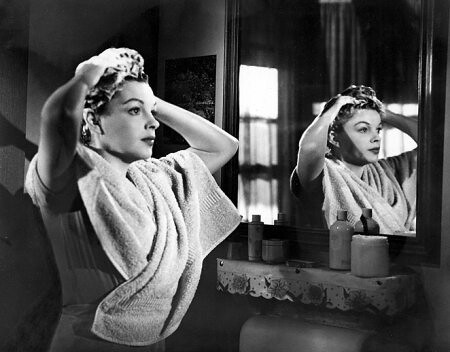
11. Judy Garland: The Studio’s Dark Recipe for a Child Star
Judy Garland, the beloved star of *The Wizard of Oz*, embodied the quintessential Hollywood child star, possessing a voice that soared and an undeniable magnetism. Yet, behind the bright lights and musical numbers lay a truly harrowing reality, one where the very studio that made her famous systematically exploited and ultimately contributed to her lifelong struggles with addiction. Her messy bond with her mother was a byproduct of a childhood devoid of normalcy, but the studio’s role was even more insidious.
Infamous MGM studio boss Louis B. Mayer, a figure of immense power in Hollywood’s golden age, was notoriously ruthless in his control over his stars’ appearances. Reportedly dissatisfied with Garland’s physique during the production of *Pigskin Parade*, he cruelly dubbed her a “fat little pig with pigtails.” This verbal abuse was compounded by a more tangible form of control: Mayer insisted that her handlers administer diet pills and amphetamines, a practice that kept her thin and able to work tirelessly, often for days on end without proper rest.
Garland herself later recounted the brutal regimen, stating, “they’d wake us up and give us the pep pills again so we could work 72 hours in a row.” She added, “Half of the time we were hanging from the ceiling, but it was a way of life for us.” This relentless, drug-fueled schedule left Garland with a lifelong struggle against addiction, a tragically common plight for many child stars of that era. Her poignant confession, “At times I have been pretty much of a walking advertisement for sleeping pills,” underscores the devastating human cost of studio greed and unchecked power. Her death in 1969, at the tragically young age of 47, stands as a stark indictment of an industry that consumed its brightest talents.

12. Milli Vanilli: The Ultimate Playback Ploy
In the late 1980s and early 1990s, the musical duo Milli Vanilli captivated the world with their catchy pop anthems and striking good looks, skyrocketing to international fame and even winning a Grammy Award for Best New Artist. Their rise seemed unstoppable, a testament to the polished production and charismatic presentation that defined the era’s pop landscape. However, their dazzling ascent was built upon a colossal deception, one that would lead to one of the most spectacular and devastating falls from grace in music history.
The first cracks in their carefully constructed facade appeared during a live MTV performance when a technical glitch exposed their lip-syncing. While playback was, and remains, a common practice in certain live performances, this particular incident hinted at a deeper, more fundamental dishonesty. The true bombshell, however, dropped later: it was revealed that Fab Morvan and Rob Pilatus, the faces of Milli Vanilli, were not the vocalists on their hit records at all. Their songs were sung by other, uncredited artists, making their entire career a meticulously orchestrated fraud.
The revelation triggered an industry-wide scandal of epic proportions. The duo was stripped of their Grammy, their albums were recalled, and their public image was irrevocably shattered. What distinguished Milli Vanilli’s downfall from other lip-syncing controversies was the absolute nature of the deceit; they were essentially actors performing to someone else’s voice. Their story remains a cautionary tale about authenticity in the entertainment industry, the lengths to which producers will go to create a marketable product, and the devastating consequences when the meticulously crafted illusion inevitably shatters under the unforgiving glare of public scrutiny.

13. Arnold Schwarzenegger: The Secret Child and Political Fallout
Arnold Schwarzenegger, a name synonymous with unparalleled success across bodybuilding, Hollywood superstardom, and even state governorship, seemed to possess a life sculpted for the history books. Yet, in 2011, this carefully constructed edifice began to crumble with the revelation of a deeply guarded secret: an affair with his family’s housekeeper, Mildred Patricia Baena, and the child born from that illicit union. This wasn’t merely a private matter; it became a public spectacle, threatening to unravel his political legacy and his marriage to Maria Shriver.
The affair, which began in 1996, was kept under wraps for years, even as Baena gave birth to a son, Joseph. The most astonishing and painful detail to emerge was the timing: Joseph was conceived while Shriver was pregnant with her own son, and the two boys were born just days apart. This shocking proximity of their births meant that Schwarzenegger had been living a double life for over a decade, with two sons of almost identical age, one within his celebrated marriage and the other a hidden testament to his infidelity.
The revelation sent shockwaves through the media, particularly given Schwarzenegger’s public persona as a family man and his high-profile political career. It led directly to the end of his 25-year marriage to Maria Shriver, a union that had long been seen as a cornerstone of his public image. The scandal exposed the immense pressure and intricate web of secrets that can exist within the lives of powerful public figures, demonstrating how even the most meticulously maintained illusions can ultimately give way to an uncomfortable truth, leaving a profound impact on personal lives and public perception.
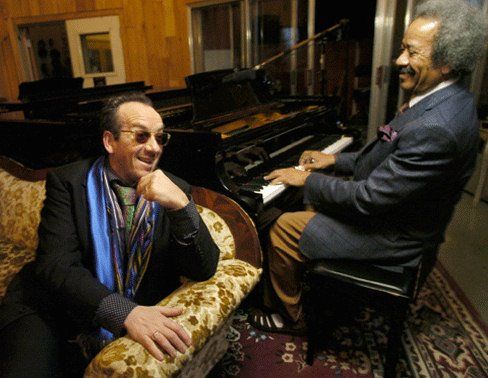
14. Elvis Costello: The Racist Outburst That Nearly Derailed a Career
Elvis Costello, a musician celebrated for his incisive songwriting and intelligent artistry, found his career teetering on the brink of collapse in 1979 after a drunken, racially charged outburst in an Ohio bar. The incident, a stark and ugly deviation from his usually sophisticated public persona, revealed a darker, less controlled side of the artist, igniting a cultural firestorm that threatened to irrevocably damage his reputation and alienate his fan base.
During the drunken tirade, Costello reportedly referred to legendary soul musician Ray Charles as a “blind, ignorant [n-word],” and swiftly followed with a similar derogatory statement about James Brown. His vitriol didn’t stop there, as he also launched attacks on American Black music and, more broadly, America as a whole. Such comments, from a prominent white artist, were met with immediate and widespread condemnation, particularly given the sensitive racial climate of the era.
The fallout was immense, forcing Costello to issue a public apology and confront the profound implications of his words. While his career did not ultimately end, the incident served as a stark and painful reminder of the responsibilities that come with a public platform, and the swift, unforgiving consequences when an artist crosses a line, especially one involving deeply rooted prejudices. It became a significant, though often downplayed, chapter in his biography, a moment when the rock star’s wit gave way to a shocking display of bigotry, leaving a stain that time could only partially fade.
The echoes of these forgotten scandals resonate still, providing a fascinating and often uncomfortable glimpse into the complex fabric of Hollywood’s past. They remind us that the allure of the silver screen has always been intertwined with profound human drama, exposing the intricate interplay of ambition, vulnerability, and the relentless, often unforgiving, glare of public judgment. From the systemic abuses hidden behind closed doors to the explosive public confrontations, these narratives paint a more complete, and often darker, picture of the industry that continues to captivate the world. They are the cautionary tales, the whispered secrets, and the enduring mysteries that prove, without a doubt, that the show business is far more than just what happens on screen.



